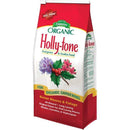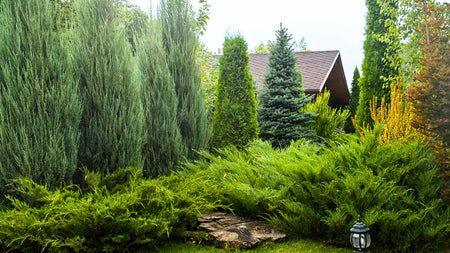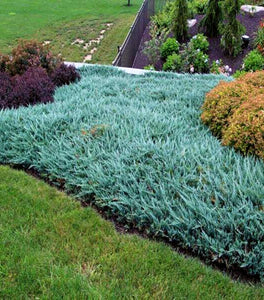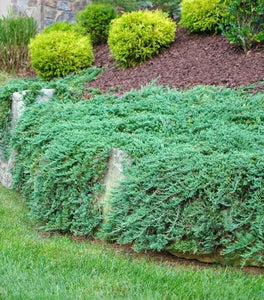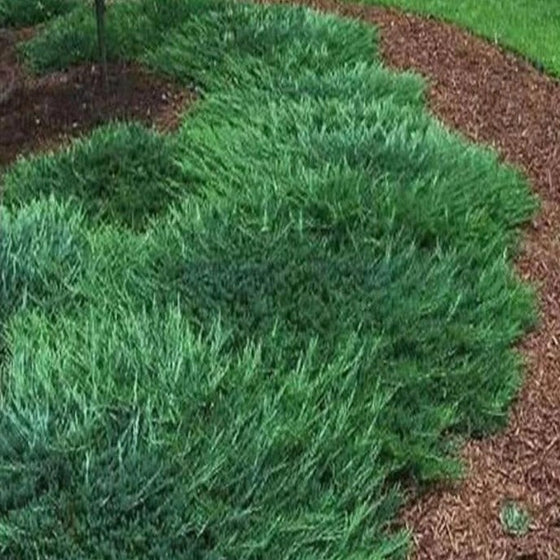
Images Depict Mature Plants
Bar Harbor Juniper Shrubs for Sale Online
Bar Harbor Juniper is a low-growing, evergreen shrub perfect for ground cover, erosion control, and adding texture to any landscape. With its beautiful, silvery-blue foliage, this versatile juniper spreads outward in a dense, creeping manner, making it an excellent choice for slopes, rock gardens, or to soften hardscape elements. Reaching a height of 6 to 12 inches with a spread of up to 8 feet, the Bar Harbor Juniper is ideal for creating a lush, low-maintenance carpet of greenery that provides year-round color and visual interest.
Highly adaptable and easy to care for, Bar Harbor Juniper thrives in full sun and well-drained soil. Once established, it is extremely drought-tolerant, making it an excellent choice for water-wise or xeriscape gardens. This juniper is also resistant to deer, pests, and disease, ensuring it stays healthy and vibrant with minimal maintenance. Its low profile and spreading habit make it perfect for filling large spaces or controlling erosion on slopes. At the same time, its hardy nature allows it to withstand harsh weather conditions, including cold winters and hot summers.
The Bar Harbor Juniper is not only functional but also visually appealing. Its silver-blue foliage turns a slight purple hue in colder months, adding seasonal interest to your landscape. Whether used in mass plantings, as a ground cover, or for erosion control, this juniper provides a low-maintenance solution for large areas while delivering year-round beauty. With its ability to adapt to a variety of soil types and climates, Bar Harbor Juniper is a reliable and attractive option for any garden or landscape design.
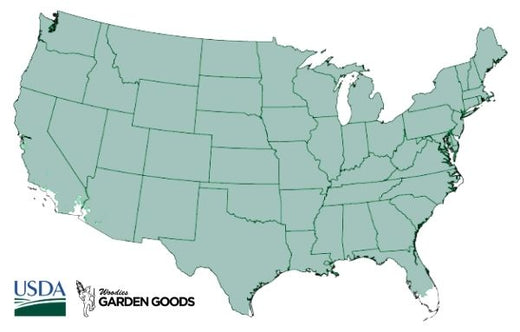
| Hardiness Zone: | 4-9 |
|---|---|
| Mature Height: | 8 to 12 Inches |
| Mature Width: | 5 to 6 feet |
| Classification: | Evergreen ground-cover shrub |
| Sunlight: | Full sun |
| Habit: | Spreading |
| Foliage: | Dense |
| Soil Condition: | Any well drained soil |
| Soil Condition: | Any well drained soil |
| Water Requirements: | Water the plant well until established |
| Uses: | A truly deer proof shrub |
How to Care for Bar Harbor Juniper
Be sure to read our planting instructions to ensure a healthy and happy Bar Harbor Juniper plant for years to come!
How do I plant a Bar Harbor Juniper?
To plant a Bar Harbor Juniper, begin by selecting a location that offers full sun and well-drained soil, as this hardy evergreen thrives in sunny areas and dry conditions. Dig a hole twice as wide and the same depth as the root ball to give the roots room to spread. Gently loosen the roots before placing the juniper in the hole, ensuring the top of the root ball is level with the soil surface. Backfill the hole with native soil, lightly tamping it down to remove air pockets. Water thoroughly after planting to help establish the roots. For best results, space multiple plants 4 to 6 feet apart to allow them to spread and fill in the area. After planting your Bar Harbor Juniper, apply a 2-3 inch layer of mulch around the base to retain moisture and regulate soil temperature. Be sure to keep the mulch a few inches away from the trunk to prevent rot. During the first growing season, water the plant deeply once a week, allowing the soil to dry out between waterings. Once established, Bar Harbor Juniper becomes highly drought-tolerant and requires little additional watering. Its low-maintenance nature makes it perfect for ground cover, erosion control, and mass plantings, especially on slopes and in rocky landscapes.
How Do I water A Bar Harbor Juniper?
To properly water a Bar Harbor Juniper, it's essential to focus on deep, infrequent watering, especially during the first year after planting. Water the juniper deeply once a week to encourage the development of a strong root system, ensuring the soil is moist but not waterlogged. Allow the top few inches of soil to dry out between waterings, as Bar Harbor Juniper thrives in well-drained soil and can suffer from root rot if overwatered. In hot or dry climates, you may need to slightly increase watering frequency, but avoid standing water around the roots. Once established, Bar Harbor Juniper is highly drought-tolerant and requires minimal watering. In most climates, supplemental water is only necessary during extended periods of drought. To help retain soil moisture and reduce the need for frequent watering, apply a layer of mulch around the base of the plant, keeping it away from the trunk to prevent rot. By following these watering guidelines, your Bar Harbor Juniper will remain healthy, vibrant, and low-maintenance, making it an excellent choice for ground cover and erosion control in various landscapes.
How Do I fertilize A Bar Harbor Juniper?
To fertilize a Bar Harbor Juniper, apply a balanced, slow-release fertilizer, such as a 10-10-10 formula, in early spring. This will provide the essential nutrients needed for healthy growth throughout the growing season. Spread the fertilizer evenly around the drip line of the plant, which is the area directly beneath the outer branches, but avoid placing it too close to the trunk. After applying the fertilizer, water the area deeply to help the nutrients penetrate the soil and reach the root system. Fertilizing once a year is typically sufficient for Bar Harbor Juniper, as it is a hardy, low-maintenance plant. For those who prefer an organic approach, compost or well-rotted manure can also be used to fertilize your Bar Harbor Juniper. Spread a 1-2 inch layer of compost around the base of the plant, taking care to keep it away from the trunk to prevent rot. Organic fertilizers will not only provide the necessary nutrients but will also improve soil structure and promote better drainage. Since Bar Harbor Juniper is a drought-tolerant and low-maintenance shrub, over-fertilizing is unnecessary. A simple, once-a-year feeding in spring will keep your juniper thriving and ensure vibrant, healthy foliage throughout the year.

How should I Prune A Bar Harbor Juniper?
Pruning a Bar Harbor Juniper should be done minimally, as these low-growing junipers naturally maintain their spreading shape with little intervention. The best time to prune is in late winter or early spring, just before new growth begins. Start by removing any dead, damaged, or diseased branches to promote healthy growth and improve airflow through the plant. Use clean, sharp pruning shears to make precise cuts near the base of the affected branches. For shaping, focus on lightly trimming overgrown areas to maintain its natural, cascading form without cutting into older wood, as junipers do not regenerate well from heavy pruning. When pruning Bar Harbor Juniper, avoid cutting back too much into the woody interior, as the plant may not regrow in these areas. Instead, concentrate on trimming the outer edges to encourage denser growth and a fuller appearance. If the juniper is being used as ground cover or for erosion control, pruning is usually unnecessary unless you need to control its spread. Regular light maintenance pruning will help keep the Bar Harbor Juniper healthy and looking its best, ensuring it remains an attractive, low-maintenance feature in your landscape.






